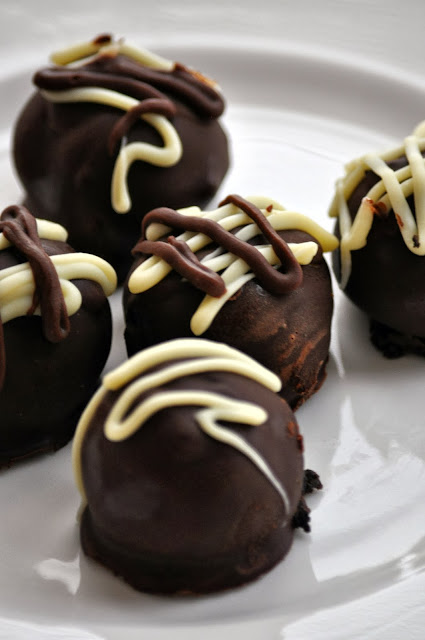This is probably my favorite cake I've made to date- and I've made a lot of cakes.
I wanted to make a Thanksgiving cake and I was sick of pumpkin and carrot, (is that blasphemy during the Thanksgiving season?) so I decided to just wing it and make up a cake.
I completely fell in love with this result! With its wine soaked cherry layer interior and classic cream cheese frosting, it was (dare I say) the highlight of the Thanksgiving dessert table.
Unfortunately (and please don't throw things at your screen in your anger), I genuinely do not remember the recipe for the cake itself. I made it up on the spot, and didn't bother writing down how much of each ingredient I was adding. I will make it again though, and when I do, I will make sure to measure out the amounts of ingredients as I put them in.
I do know I made the topping though! The cranberry topping was, of course, the focal point of this cake. Making the topping was very easy, and I plan to put it to good use for future cakes.
Cranberry and Rosemary Topping:
1 package cranberries
1 rosemary branch
1 cup powdered sugar
Directions:
1. Wash your cranberries. I used about half a package for a 9 in. cake.
2. Boil a pot of water, turn down the heat so it is not a rapid boil, and throw in the cranberries. The point of this is to make the cranberries edible, instead of rock hard. Boil them until they start to feel softer- quickly take them off, drain the water, and dry them in a bowl covered with paper towels. Making sure they don't pop is critical, because if they do, you will just have a cranberry mush on your cake. They should give slightly when you pinch them, but should not be completely pop-able.
3. While the cranberries are still warm, throw them in a bowl of powered sugar and toss until coated evenly.
4. Arrange the cranberries on the cake. Resist the urge to make a tall pyramid- they will tumble when you cut into them.
5. Place as much (or as little) rosemary within the cranberry topping as you wish.
This cake is definitely going to be a Thanksgiving staple for me, and I plan to put the topping to good, repeated use.
-Oksana

















